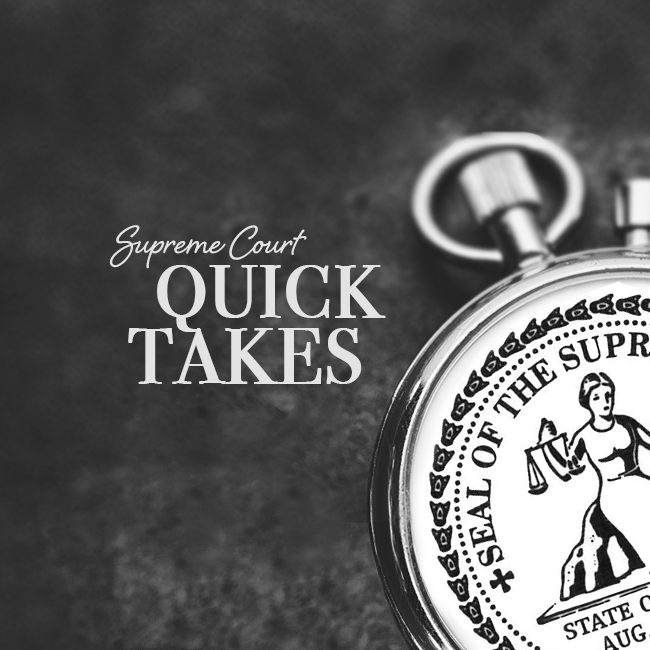Quick Take on Illinois Supreme Court Opinion Issued Thursday, October 26, 2023

A leading appellate attorney reviews the Illinois Supreme Court opinion handed down Thursday, October 26.
Lichter v. Porter Carroll, 2023 IL 128468
By Joanne R. Driscoll, Forde & O’Meara LLP
In this case, the Illinois Supreme Court was called upon to interpret Section 13-209 of the Illinois Code of Civil Procedure (735 ILCS 5/13-209 (West 2020)). Specifically, the Court answered the question of whether a plaintiff in a personal injury action who did not know the defendant was deceased at the time the action was filed and before the statute of limitations had expired, could proceed after learning of the death and after the expiration of the statute of limitations by seeking appointment of a special representative, pursuant to Section 13-209(b)(2), or whether the plaintiff had to seek appointment of a personal representative prior to expiration of the statute of limitations, pursuant to Section 13-209(c).
Applying rules of statutory interpretation, in an opinion authored by Justice Cunningham, with Justice Holder White taking no part, the Court majority stated that the plain language of subsection (b)(2) provides that, if a defendant dies before the statute of limitations period has run and no estate has been opened for the deceased defendant and there is no personal representative, the plaintiff may move to appoint a special representative to defend the lawsuit. As the facts of this case fell within subsection (b)(2), the Court held that the plaintiff in this case correctly sought the appointment of a special representative.
In reaching its decision, the majority rejected defendant’s reliance on Relf v. Shatayeva, 2013 IL 114925, to argue that since the plaintiff did not learn of the defendant’s death until after the statute of limitations expired, the only provision applicable was subsection (c). 735 ILCS 5/13-209(c) (“If a party commences an action against a deceased person whose death is unknown to the party before the expiration of the time limited for the commencement thereof, *** the action may be commenced against the deceased person’s personal representative ***.) The majority opinion distinguished Relf on its facts, noting that an estate had been opened for the deceased defendant when the lawsuit was filed so there was a personal representative to defend the lawsuit. It also noted that subsection (b) was not addressed in Relf, and there was nothing in subsection (b) limiting its applicability to the situation where the plaintiff knows of the defendant’s death at the time the lawsuit is filed. To include such limiting language would violate rules of statutory construction. According to the majority either subsection (b)(2) or (c) was available to the plaintiff in this case because both subsections included the word “may.”
The Court majority also rejected defendant’s reliance on Richards v. Vaca, 2021 IL App (2d) 210270, which applied the six-month time limit from the defendant’s death to seek appointment of a personal representative in subsection (b)(1) to the time for seeking appointment of a special representative in subsection (b)(2). According to the majority opinion, the six-month time limit in subsection (b)(1) applies where the plaintiff learns of the defendant’s death prior to the statute of limitations expiring. Where the plaintiff learns of that death after the statute of limitations has expired, it naturally follows that the two-year time limit set forth in subsection (c) applies to a plaintiff proceeding under subsection (b)(2).
Justice Rochford, in a dissent joined by Justice Overstreet, opined that the majority erred in reading subsection (b)(2) in isolation and separate from subsection (b)(1) and then reading subsection (c)’s two-year time limit into subsection (b)(2). The dissent also disagreed with the majority’s reading of Relf and Richards. According to the dissent, the only option available to plaintiff, who did not learn of the defendant’s death until after the statute of limitations expired and after it was too late to comply with the six-month time limit in subsection (b)(2) for appointment of a special representative, was to proceed under subsection (c) and seek the appointment of a personal representative, which was not done here.

